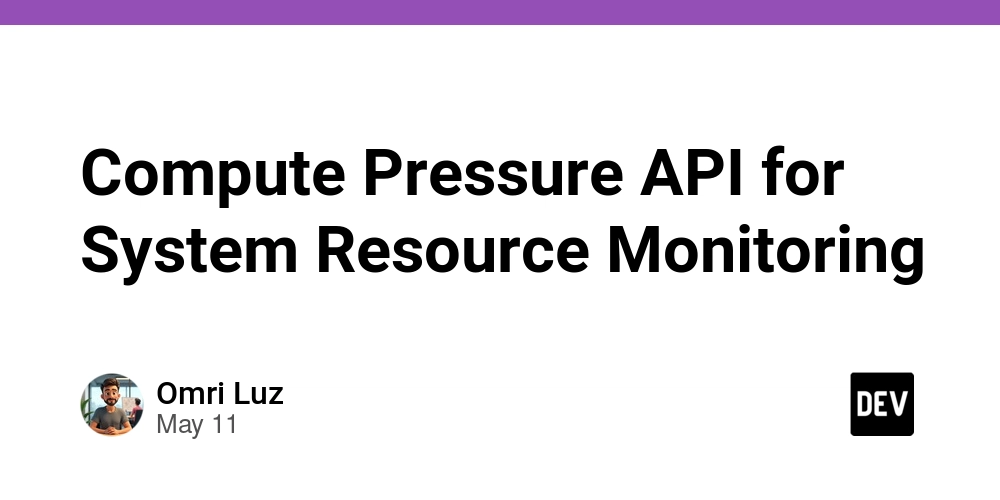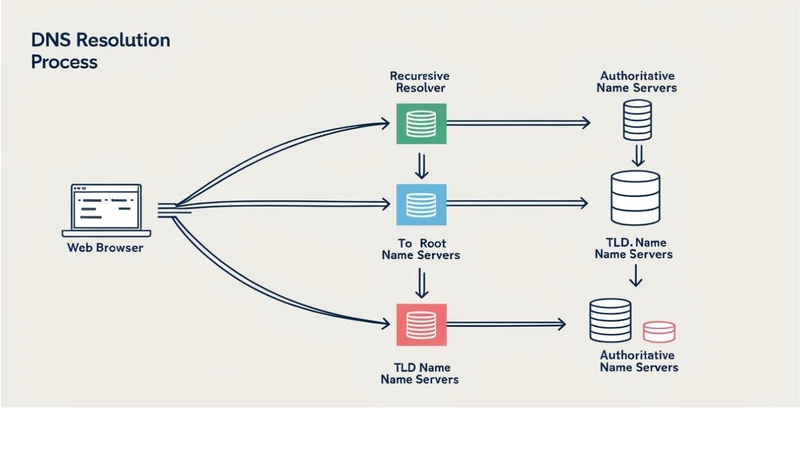Compute Pressure API for System Resource Monitoring
Compute Pressure API: A Comprehensive Guide to System Resource Monitoring Historical and Technical Context As web applications have evolved, the complexity of operations conducted within user browsers has significantly increased. The asynchronous nature of JavaScript, coupled with the rapid growth in computationally intensive tasks—such as graphics rendering, data manipulation, and real-time collaboration—has led to a pressing need for tools that can monitor resource usage. The Compute Pressure API was born out of this necessity, allowing developers to create more responsive applications by adapting to the hardware’s resource capacity dynamically. The Compute Pressure API is part of the ongoing evolution of web performance monitoring technologies, similar to the Network Information API and the Resource Timing API. While earlier web technologies provided insights primarily into load times and resource allocation, Compute Pressure API extends this monitoring to the CPU and memory usage, crucially providing insights into system load. Now, developers can build applications that intelligently react to changes in available resources, ensuring consistent performance even under varying load conditions. Technical API Overview What is the Compute Pressure API? The Compute Pressure API provides a mechanism to track the computational load on a system, enabling developers to adjust their applications accordingly. The primary goal of the API is to monitor compute pressure signals emitted by the browser, indicating the system's capacity to perform additional tasks. Key Components Events: The API primarily revolves around events that notify applications when resource pressures change. computepressure: This event allows developers to listen for changes in compute pressure. Pressure Levels: The API defines several pressure levels: none: No pressure, ample resources are available. moderate: Some pressure; caution is advised for resource-intensive tasks. high: High pressure; resource-intensive tasks should be curtailed. How It Works When a system begins to experience heavy computational loads, the browser determines this and triggers the computepressure event. This event provides a data structure containing the pressure level, which the application can respond to in real-time. Here’s a basic illustration of how to use the Compute Pressure API: if ('computePressure' in window) { window.addEventListener('computepressure', (event) => { console.log('Compute Pressure Level:', event.pressureLevel); switch (event.pressureLevel) { case 'none': // Server worker or background tasks can be initiated break; case 'moderate': // Possibly throttle some resource-intensive tasks break; case 'high': // Reduce resource consumption or defer tasks break; } }); } In-Depth Code Examples Example 1: Dynamic Resource Management Below is an in-depth example of how an application could mitigate its resource use by adapting to compute pressure levels: const expensiveTask = async () => { const result = await new Promise(resolve => { // Simulate a computation-heavy task setTimeout(() => resolve('Task Completed'), 3000); }); console.log(result); }; // Event handler to manage resource-intensive task execution const handleComputePressure = (event) => { switch (event.pressureLevel) { case 'none': expensiveTask(); // Execute when the system has sufficient resources break; case 'moderate': console.warn('Moderate compute pressure detected. Throttling further tasks.'); break; case 'high': console.warn('High compute pressure detected. Suspending tasks.'); break; } }; // Set up the Compute Pressure API listener if ('computePressure' in window) { window.addEventListener('computepressure', handleComputePressure); } Example 2: Using Compute Pressure with UI Performance In a real-world application, you can modify how user interactions are handled based on compute pressure. Below is a simple example of optimizing animation based on the pressure level: const animateCircle = (circle) => { // Animate the circle continuously requestAnimationFrame(() => { // Animation logic circle.style.transform = `translateY(${Math.sin(Date.now() / 1000) * 50}px)`; animateCircle(circle); }); }; const updateAnimationsBasedOnPressure = (event) => { const circles = document.querySelectorAll('.circle'); switch (event.pressureLevel) { case 'none': circles.forEach(circle => animateCircle(circle)); break; case 'moderate': case 'high': circles.forEach(circle =>

Compute Pressure API: A Comprehensive Guide to System Resource Monitoring
Historical and Technical Context
As web applications have evolved, the complexity of operations conducted within user browsers has significantly increased. The asynchronous nature of JavaScript, coupled with the rapid growth in computationally intensive tasks—such as graphics rendering, data manipulation, and real-time collaboration—has led to a pressing need for tools that can monitor resource usage. The Compute Pressure API was born out of this necessity, allowing developers to create more responsive applications by adapting to the hardware’s resource capacity dynamically.
The Compute Pressure API is part of the ongoing evolution of web performance monitoring technologies, similar to the Network Information API and the Resource Timing API. While earlier web technologies provided insights primarily into load times and resource allocation, Compute Pressure API extends this monitoring to the CPU and memory usage, crucially providing insights into system load. Now, developers can build applications that intelligently react to changes in available resources, ensuring consistent performance even under varying load conditions.
Technical API Overview
What is the Compute Pressure API?
The Compute Pressure API provides a mechanism to track the computational load on a system, enabling developers to adjust their applications accordingly. The primary goal of the API is to monitor compute pressure signals emitted by the browser, indicating the system's capacity to perform additional tasks.
Key Components
-
Events: The API primarily revolves around events that notify applications when resource pressures change.
-
computepressure: This event allows developers to listen for changes in compute pressure.
-
-
Pressure Levels: The API defines several pressure levels:
-
none: No pressure, ample resources are available. -
moderate: Some pressure; caution is advised for resource-intensive tasks. -
high: High pressure; resource-intensive tasks should be curtailed.
-
How It Works
When a system begins to experience heavy computational loads, the browser determines this and triggers the computepressure event. This event provides a data structure containing the pressure level, which the application can respond to in real-time.
Here’s a basic illustration of how to use the Compute Pressure API:
if ('computePressure' in window) {
window.addEventListener('computepressure', (event) => {
console.log('Compute Pressure Level:', event.pressureLevel);
switch (event.pressureLevel) {
case 'none':
// Server worker or background tasks can be initiated
break;
case 'moderate':
// Possibly throttle some resource-intensive tasks
break;
case 'high':
// Reduce resource consumption or defer tasks
break;
}
});
}
In-Depth Code Examples
Example 1: Dynamic Resource Management
Below is an in-depth example of how an application could mitigate its resource use by adapting to compute pressure levels:
const expensiveTask = async () => {
const result = await new Promise(resolve => {
// Simulate a computation-heavy task
setTimeout(() => resolve('Task Completed'), 3000);
});
console.log(result);
};
// Event handler to manage resource-intensive task execution
const handleComputePressure = (event) => {
switch (event.pressureLevel) {
case 'none':
expensiveTask(); // Execute when the system has sufficient resources
break;
case 'moderate':
console.warn('Moderate compute pressure detected. Throttling further tasks.');
break;
case 'high':
console.warn('High compute pressure detected. Suspending tasks.');
break;
}
};
// Set up the Compute Pressure API listener
if ('computePressure' in window) {
window.addEventListener('computepressure', handleComputePressure);
}
Example 2: Using Compute Pressure with UI Performance
In a real-world application, you can modify how user interactions are handled based on compute pressure. Below is a simple example of optimizing animation based on the pressure level:
const animateCircle = (circle) => {
// Animate the circle continuously
requestAnimationFrame(() => {
// Animation logic
circle.style.transform = `translateY(${Math.sin(Date.now() / 1000) * 50}px)`;
animateCircle(circle);
});
};
const updateAnimationsBasedOnPressure = (event) => {
const circles = document.querySelectorAll('.circle');
switch (event.pressureLevel) {
case 'none':
circles.forEach(circle => animateCircle(circle));
break;
case 'moderate':
case 'high':
circles.forEach(circle => circle.style.animationPlayState = 'paused');
break;
}
};
if ('computePressure' in window) {
window.addEventListener('computepressure', updateAnimationsBasedOnPressure);
}
Edge Cases and Advanced Implementation Techniques
Handling Multiple Pressures
Handling simultaneous events can introduce complexities. It is crucial to ensure that applications maintain consistency when transitioning between pressure levels. Developers might consider implementing a state machine to keep track of previous states effectively.
Debouncing Event Listeners
Because compute pressure events can fire in rapid succession, debouncing may be necessary. Implementing a debouncer can prevent frequent state changes that might negatively affect user experience:
let debounceTimer;
const debounce = (callback, delay) => {
clearTimeout(debounceTimer);
debounceTimer = setTimeout(callback, delay);
};
window.addEventListener('computepressure', (event) => {
debounce(() => {
// Handle pressure change
}, 200);
});
Comparison with Alternative Approaches
While the Compute Pressure API introduces a specialized method to manage resource consumption, it's worth contrasting with other techniques:
Performance API: The Performance API gives valuable information on load times but lacks detailed insight into system load. The Compute Pressure API complements it by monitoring the real-time state of resources.
Web Workers: Offloading tasks to web workers can often alleviate immediate resource bottlenecks, but this does not provide real-time feedback about system performance, which the Compute Pressure API offers.
Adaptive Throttling: Developers can implement manual throttling mechanisms, but this approach may lack the precision and intelligence of the Compute Pressure API, which dynamically adjusts based on actual system load.
Real-World Use Cases
Online Games: Many online gaming platforms use the Compute Pressure API to optimize frame rates and animations based on device performance, delivering smoother gameplay.
Data Visualization Apps: Applications that render complex graphs or charts can leverage the API to reduce rendering load dynamically based on compute pressure, ensuring usability even on low-powered devices.
Video Streaming Services: Streaming platforms could use the API to adapt video quality and buffering strategies based on device load, enhancing user experience without buffering issues.
Performance Considerations and Optimization Strategies
When leveraging the Compute Pressure API, developers should consider the following:
Event Handling Efficiency: Ensure that event listeners perform lightweight operations to prevent further pressure on the compute capability, particularly during high-load conditions.
Resource Management Strategies: Establish clear strategies for resuming and deferring activities based on pressure levels to maintain application responsiveness.
Testing on Various Devices: Variations in hardware capabilities necessitate extensive testing on devices of different configurations to understand how the application behaves under different load conditions.
Potential Pitfalls and Advanced Debugging Techniques
Common Issues
Inconsistent Pressure Reporting: The browser may not always report consistent pressure signals, leading to jittery user experiences. Implementing a smoothing algorithm can help mitigate abrupt changes.
Over-reliance on Events: Depending solely on compute pressure events might lead to performance degradation during transitional states. Implementing fallback strategies ensures that the application remains responsive.
Debugging Techniques
Console Logging: Extensive logging throughout event listener code can provide insights into how compute pressure affects functionality.
Performance Testing: Utilize tools such as Lighthouse or WebPageTest to monitor the performance impact of changes made in response to compute pressure.
Profiling Tools: Utilize Chrome's DevTools to profile JavaScript execution and identify bottlenecks and areas affected by high compute pressure events.
Conclusion
The Compute Pressure API provides an essential toolset for modern web developers committed to delivering high-performance applications. By enabling dynamic responses to system resource conditions, developers can craft applications that remain responsive even under challenging circumstances.
By understanding the intricate details of the Compute Pressure API—including its implementation techniques, best practices, and potential pitfalls—developers can leverage this technology to enhance user experience and maintain application performance standards across diverse devices.
References
- Compute Pressure API - MDN Web Docs
- Performance API - MDN Web Docs
- Web Workers - MDN Web Docs
- Debouncing JavaScript Functions
- Debugging JavaScript Performance Issues
The Compute Pressure API represents a significant stride in web performance optimization, granting developers the ability to monitor system resources and act dynamically based on computational load. This comprehensive guide is intended to aid senior developers and performance engineers in maximizing the potential of the API in their JavaScript applications.










































































































































































![[The AI Show Episode 146]: Rise of “AI-First” Companies, AI Job Disruption, GPT-4o Update Gets Rolled Back, How Big Consulting Firms Use AI, and Meta AI App](https://www.marketingaiinstitute.com/hubfs/ep%20146%20cover.png)





























































































































![[DEALS] Internxt Cloud Storage Lifetime Subscription: 10TB Plan (88% off) & Other Deals Up To 98% Off – Offers End Soon!](https://www.javacodegeeks.com/wp-content/uploads/2012/12/jcg-logo.jpg)


![Ditching a Microsoft Job to Enter Startup Purgatory with Lonewolf Engineer Sam Crombie [Podcast #171]](https://cdn.hashnode.com/res/hashnode/image/upload/v1746753508177/0cd57f66-fdb0-4972-b285-1443a7db39fc.png?#)














































































































































































































































![[Fixed] Gemini 2.5 Flash missing file upload for free app users](https://i0.wp.com/9to5google.com/wp-content/uploads/sites/4/2025/03/google-gemini-workspace-1.jpg?resize=1200%2C628&quality=82&strip=all&ssl=1)


![As Galaxy Watch prepares a major change, which smartwatch design to you prefer? [Poll]](https://i0.wp.com/9to5google.com/wp-content/uploads/sites/4/2024/07/Galaxy-Watch-Ultra-and-Apple-Watch-Ultra-1.jpg?resize=1200%2C628&quality=82&strip=all&ssl=1)











![Apple M4 MacBook Air Hits New All-Time Low of $824 [Deal]](https://www.iclarified.com/images/news/97288/97288/97288-640.jpg)
![An Apple Product Renaissance Is on the Way [Gurman]](https://www.iclarified.com/images/news/97286/97286/97286-640.jpg)
![Apple to Sync Captive Wi-Fi Logins Across iPhone, iPad, and Mac [Report]](https://www.iclarified.com/images/news/97284/97284/97284-640.jpg)
![Apple M4 iMac Drops to New All-Time Low Price of $1059 [Deal]](https://www.iclarified.com/images/news/97281/97281/97281-640.jpg)









































![Apple's 11th Gen iPad Drops to New Low Price of $277.78 on Amazon [Updated]](https://images.macrumors.com/t/yQCVe42SNCzUyF04yj1XYLHG5FM=/2500x/article-new/2025/03/11th-gen-ipad-orange.jpeg)

























































